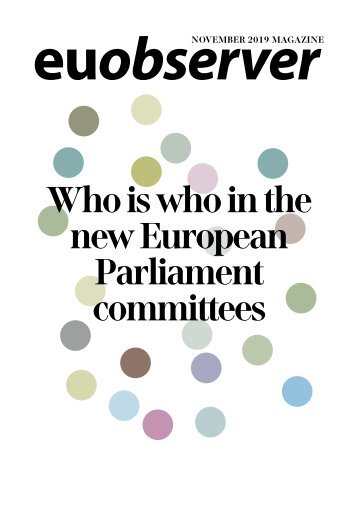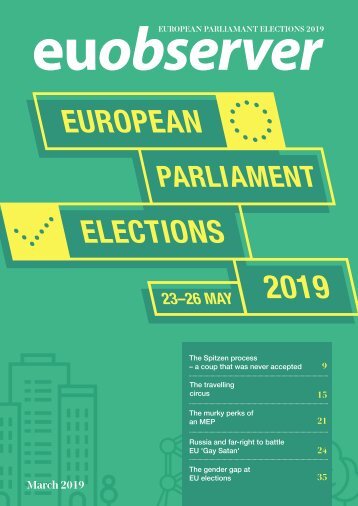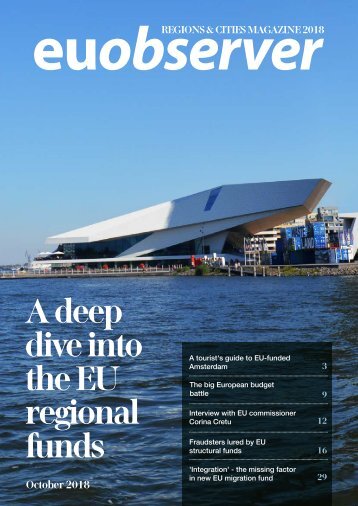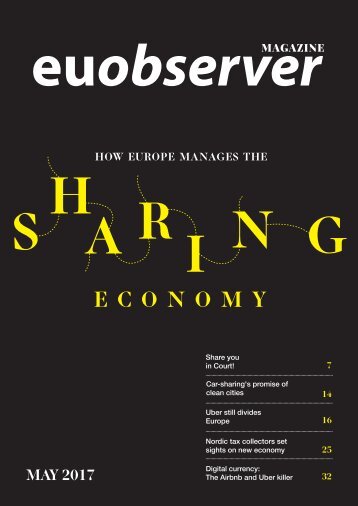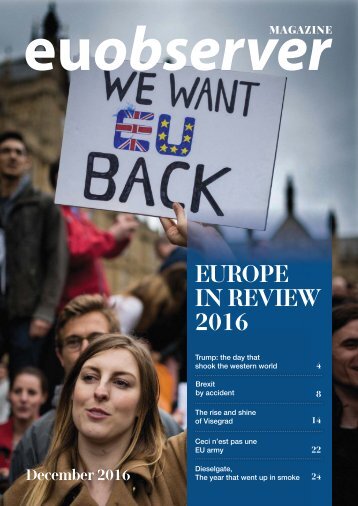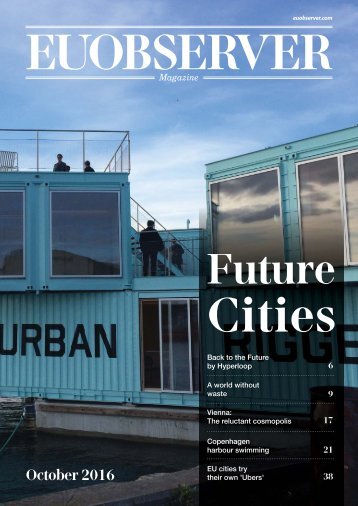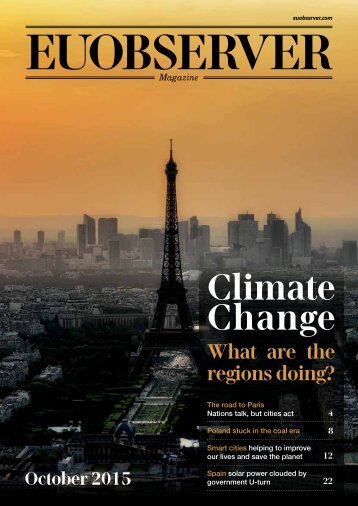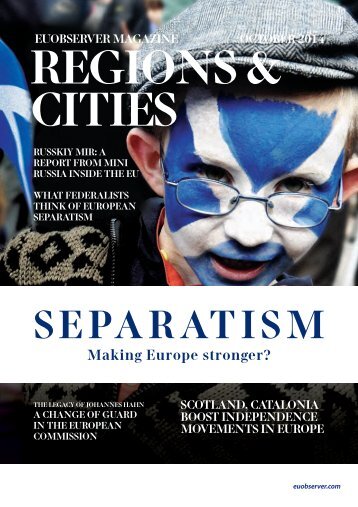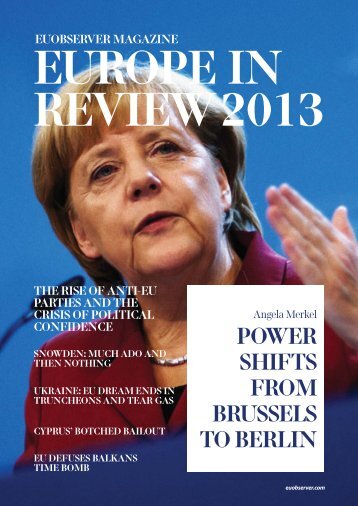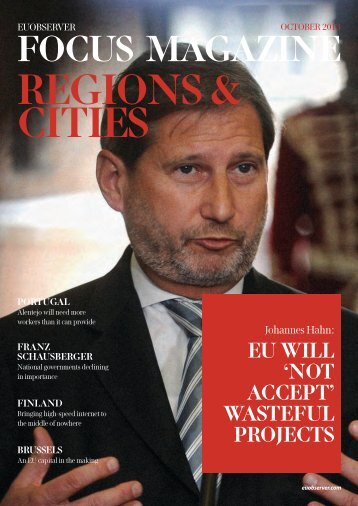Climate change: What are the regions doing?
- Text
- Transportation
- Hyperloop
- Europe
- Environment
- Change
- Energy
- Energy
- Euobserver
- Climate
- Cities
- Emissions
- Regions
Photo: Flickr/cubn6
Photo: Flickr/cubn6 Hidalgo is implementing a “climate and energy action plan” launched by her predecessor, Bertrand Delanoe, to update a previous plan adopted in 2007. Despite Hidalgo’s high-profile fight against diesel cars, Izard, however, said that Paris’ mayor did not go far enough. The aim is to reduce carbon emissions by 25 percent by 2020 compared to 2004, and by 75 percent by 2050. The plan also targets a 25 percent reduction of energy consumption compared to 2004, and 25 percent of energy consumption from renewable energy. “There is still much to do, especially as car pollution is an environmental issue, but also more and more a health issue,” she said. “Bicycles are relatively little used compared to other European cities, and too little is done to make Paris more pedestrian”. HIGH AMBITIONS The City of Paris committed to reduce its own carbon footprint, aiming to reduce emissions and energy consumption by 30 percent by 2020 compared to 2004, and to use by that date 30 percent of renewable energy. In addition to road traffic limitations, the climate plan sets targets for an improvement of public transportation, low-energy housing and services, and the development of a green economy and innovation. “Globally, it is an interesting document, with quite high ambitions,” Charlotte Izard, from the French section of the Climate Action Network (CAN), told EUobserver. And while the action plan is ambitious as far as emissions and consumption reduction is concerned, it is not ambitious enough on adaptation -a place for nature or agriculture in urban areas - Izard pointed out. Izard also lamented the fact that the plan is silent on fossil fuel divestment. “The City of Paris could act on its financial portfolio and divest assets linked to fossil fuels. It could also decide not to invest in new airport infrastructure,” she said. COP21 CAPITAL The climate plan will be revised in 2017, but the main axis of this revision is not yet known. Nor has there been an evaluation of the impact of the measures taken so far. 18 ––––– EUobserver Magazine 2015
The ultimate target is to keep all diesel-powered vehicles built before 2011 out of the French capital. Photo: Piano Piano! The last official carbon accounting for Paris was published in 2011, before the launch of the current plan, and based on data from 2009. In 2009, two years after the first action plan was launched, carbon emissions were down 2 percent compared to 2004. The main reasons for that reduction, the City of Paris explained, was a decrease in energy consumption in buildings and a decrease in car traffic. The UN climate change conference (COP21) that is scheduled to take place in the French capital on 30 November-11 December will be a showcase for Hidalgo’s ambitions. On 4 December, Hidalgo will host a summit of a thousand world mayors, alongside former New York mayor Michael Bloomberg. Bloomberg is the UN Secretary General’s Special Envoy for cities and climate change, and he is leading the Compact of mayors, a coalition of mayors and city officials fighting climate change at a local level. Ahead of the COP21, Hidalgo also organised a summit of 32 European cities in Paris last March. Mayors of cities and capitals committed to “join forces and strengthen the instruments that will lead us towards the energy and environmental transition”. REGIONAL IMPACT ON PARIS CLIMATE While the COP21 is referred to as the Paris summit or the Paris conference, the discussions themselves will not take place in Paris. It will be in the town of Le Bourget, a dozen kilometres on the other side of the peripherique, the Paris ring road that is also the administrative, political and often cultural limit between Paris and its suburban region. With 2 million inhabitants living on 105.4 square kilometres, the city of Paris represents only a small part of the 12,012 square kilometre Ile de France region, where 12 million people live - 19 percent of the whole French population. by the City of Paris can only have a limited impact if they are not coordinated with or supported by the rest of the region. And in return, actions taken, or lack thereof, by local authorities around Paris can have an impact in Paris, like air pollution. “Even if there is a dialogue between Paris and other authorities, there is currently no common climate action plan,” an official from one authority told EUobserver. “We try to have meetings ahead, but each authority makes its own decision.” Eight action plans have been launched by local authorities in the region in recent years. The Region itself, which is a political entity with an assembly and a president, adopted its own framework in 2012 after it was elaborated with the national government. To complicate matters further, a new entity will be created on 1 January 2016, the Metropole du Grand Paris (Greater Paris Metropolis). It will be comprised of Paris and three of the Ile de France departments. The Grand Paris will be responsible for climate policy, but only from 2017, and will have to set up its own climate action plan. “We do not know how services will be organised or how decisions will be taken,” the official said. The new organisation may also impact the implementation of the current plan, when it comes to the link between urban and rural areas. “The sources of renewable energies are in rural areas, which are part of the Region but will be outside the Metropolis,” Climate Action Network’s Charlotte Izard said. “They will have to find a modus vivendi.” While Hidalgo’s ambitions are already curtailed by lack of regional cooperation, the Paris mayor may find it even harder to establish a climate policy that lives up to the importance of her capital. When it comes to climate policies, actions undertaken EUobserver Magazine 2015 ––––– 19
- Page 1 and 2: euobserver.com Magazine Climate Cha
- Page 3 and 4: PHOTOSSERIES How climate change may
- Page 5 and 6: “As cities, we can lead the way i
- Page 7 and 8: THE SMART DESTINATION FOR 2016. Wel
- Page 9 and 10: In the small Polish town of Brzeszc
- Page 11 and 12: INNOVATION FOR GROWTH Ageing popula
- Page 13 and 14: Empty street in Warsaw. Street ligh
- Page 15 and 16: EUobserver Magazine 2015 ----- 15
- Page 17: Photo: DinosaursAreNotDead Climate
- Page 21 and 22: PHOTOSSERIES Small and big solution
- Page 23 and 24: Part of the problem stems from big
- Page 25 and 26: The largest network of regions in E
- Page 27 and 28: It all began when Statoil wanted to
- Page 29 and 30: The algae reactor in Kalundborg Gre
- Page 31 and 32: “ Only physics will decide if we
- Page 33 and 34: The most important policy change is
- Page 35 and 36: CHICKEN-AND-EGG PROBLEM Growth of t
Inappropriate
Loading...
Mail this publication
Loading...
Embed
Loading...





